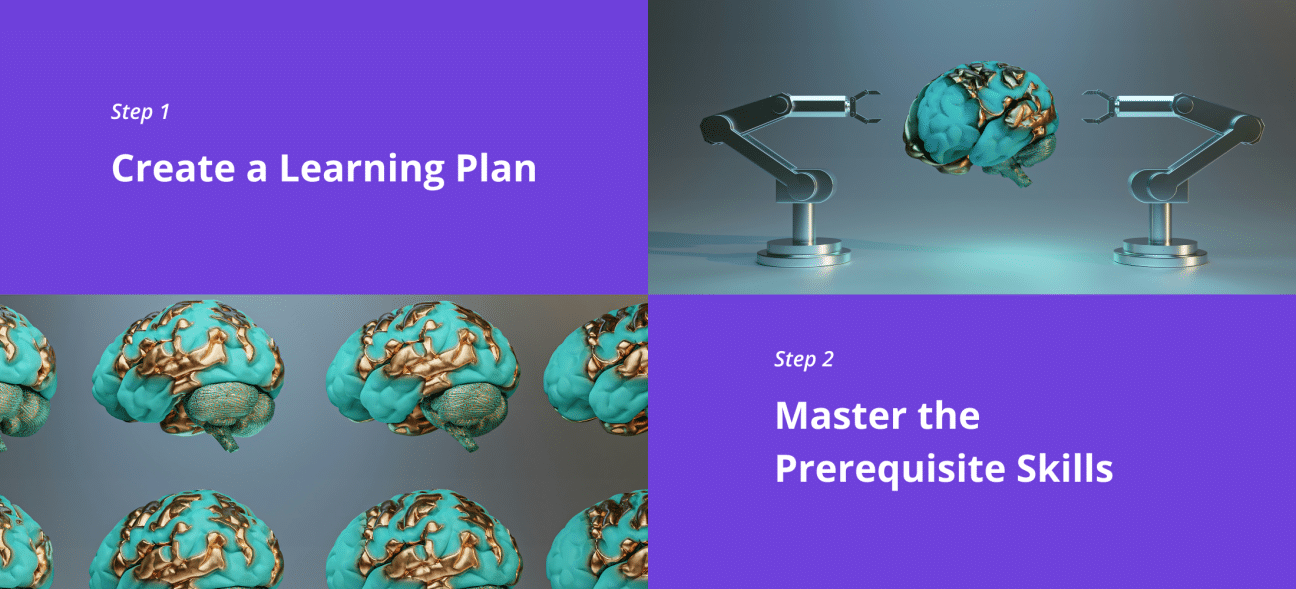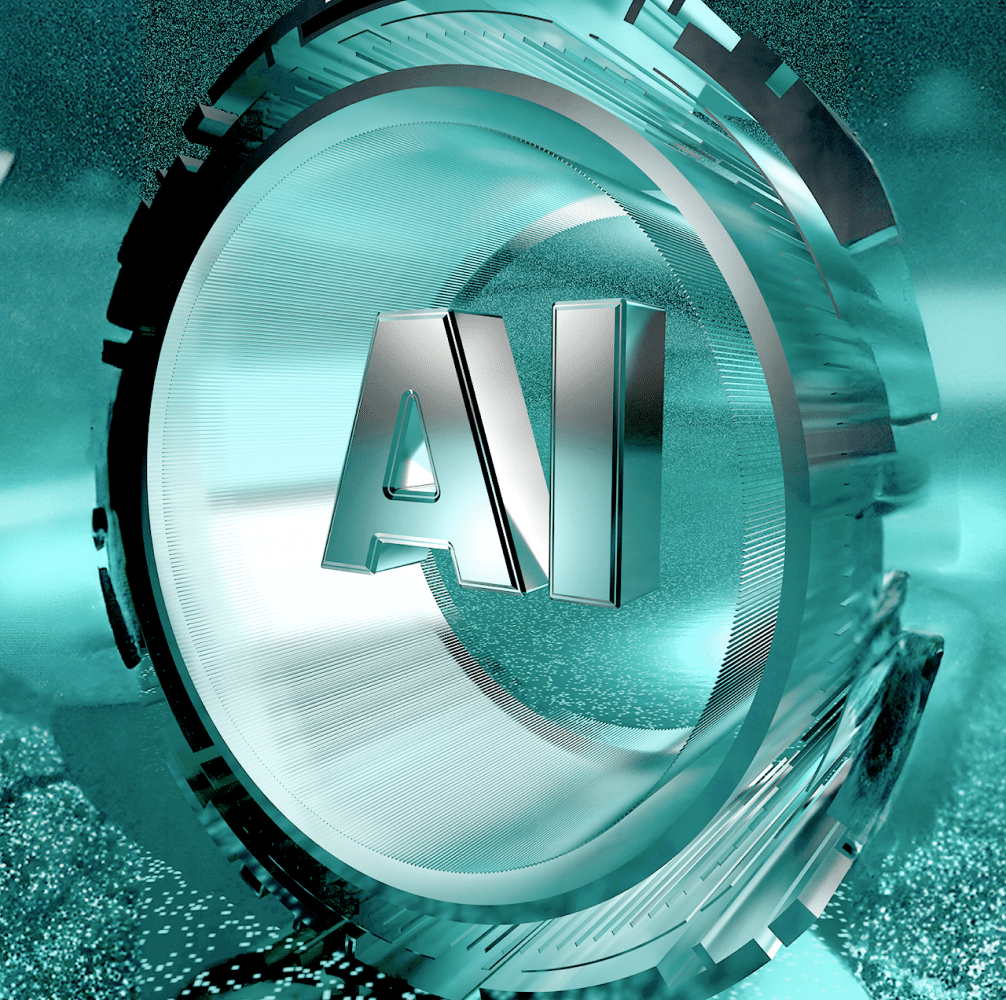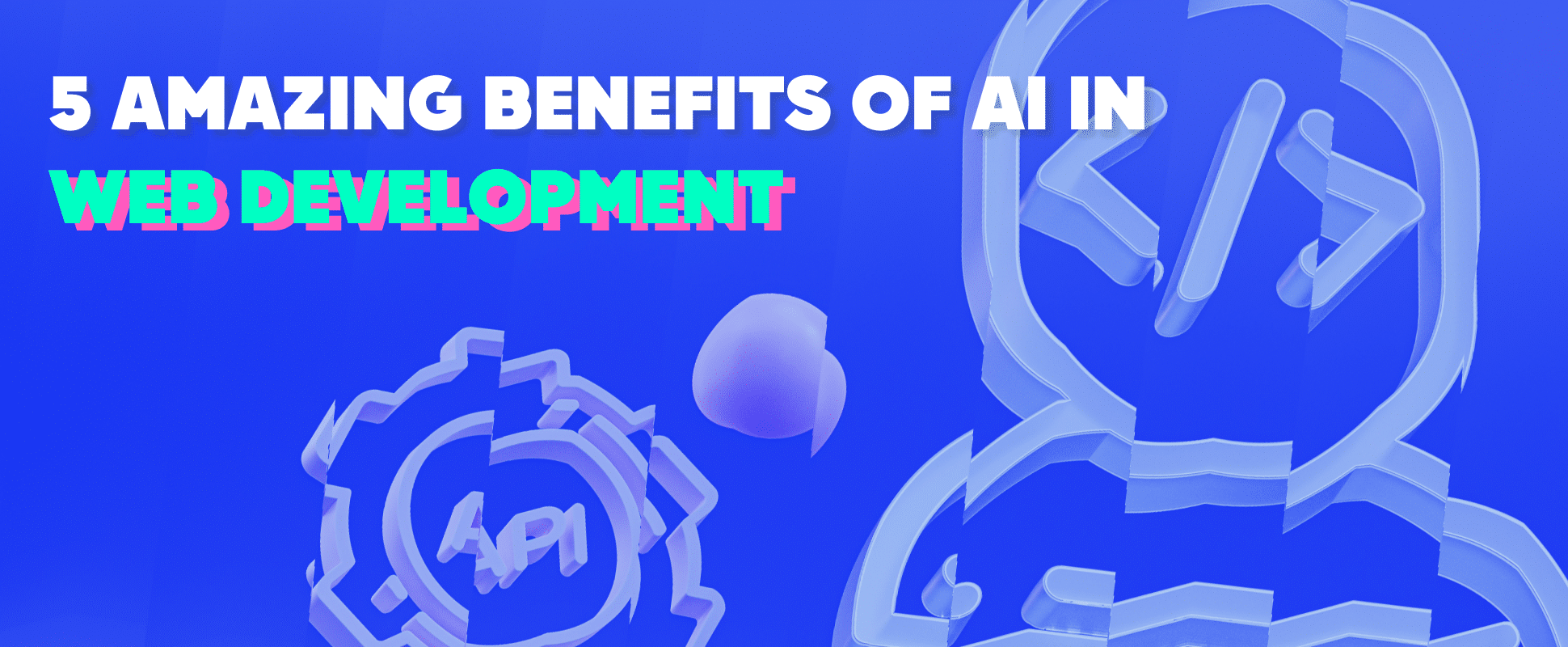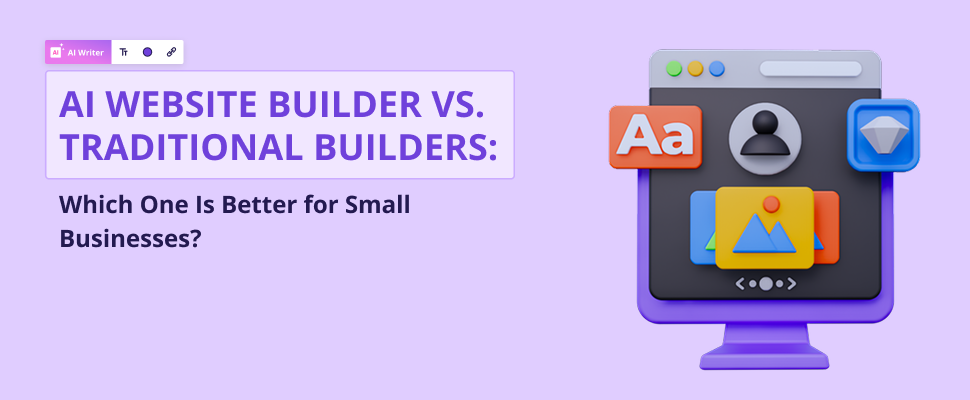
How to Learn AI Online
17 min to read
AI is a rapidly evolving branch of computer science that has revolutionized many industries, including supply chain, food industry, pharmaceuticals, manufacturing, fabrication, chatbots, and content creation. In fact, the majority of recent content online has been created using some form of artificial intelligence, such as text generators or AI website builders, such as Hocoos AI.
However, the impact of AI technologies stretches beyond industrial innovation. It has the power to quickly impact job positions in the entire workforce, ranging from factory workers to waitstaff to engineers. So, considering that the role of AI continues to grow across all sectors, it’s becoming increasingly important to learn about AI.
This guide aims to inform you on how to learn AI from scratch, to provide you with the knowledge and steps necessary to navigate your journey, and to discuss the importance of formal education in this exciting but complex field. But before we dive into the juicy bits, let’s get acquainted with what AI actually is.
What is Artificial Intelligence?
As stated above, artificial intelligence is a branch of computer science that deals with the cognitive problems associated with human intelligence, such as learning, pattern recognition, and problem-solving. However, unlike human intelligence, AI deals with these problems with machine efficiency that sometimes exceeds human capabilities.
As both a scientific and engineering branch, AI has a number of subfields that have permeated almost every aspect of our lives. Though most people associate AI with recent generative models such as ChatGPT, the truth is that AI technologies have been impacting our lives long before ChatGPT became available to the general public.
For example, AI is the brain behind route prediction on Google Maps, the voice behind smart digital assistants, the invisible cogs that personalize your news feed on social media, and the recommendation engines that suggest what to watch next on your favorite streaming service.
Different Types of Artificial Intelligence
As the new and innovative applications of Artificial Intelligence technology continue to expand, the number of subfields continues to grow. However, to make things simpler, we’ll categorize AI technologies into three different types.
Artificial Narrow Intelligence (ANI)
ANI, as its name implies, is the most common type of AI we’re interacting with today; it’s designed to perform a single task, like voice and pattern recognition, prompt and inquiry responses, and content generation.
ANI operates under a limited and predefined range of contexts following programmed algorithms that enable them to perform specific tasks. The best-known examples of Artificial Narrow Intelligence are generative AI models, such as ChatGPT, which excels at text generation; DALL-E, which generates images based on textual descriptions; and AI Website Builders, such as Hocoos AI.
Artificial General Intelligence
Artificial General Intelligence, abbreviated as AGI, is a theoretical form of AI that possesses the ability to understand, learn, adapt, and implement knowledge as broadly and flexibly as human intelligence. Some theorize that this form of AI would possess, or would be able to develop, self-awareness, emotional understating, and the ability to interpret the world as human intelligence would.
Though some Artificial Intelligence models, such as Chat-GPT, have shown the ability to generalize across different tasks, the AGI still remains a theoretical concept that hasn’t been realized in practical applications. At least, not yet.
Artificial Super Intelligence
Artificial superintelligence, abbreviated as ASI, refers to the future scenario in which Artificial Intelligence models surpass human intelligence in nearly all economically valuable work. However, while intriguing, this concept remains akin to flying cars from The Jetsons—it’s highly speculative.
How To Learn AI Online
As you might’ve discerned thus far, AI is a really broad branch comprised of several diverse fields, each as important as the other. So, it’s not really surprising that the thought of learning AI might seem overwhelming at first. However, the process becomes significantly easier once you break it down into more manageable chunks. Let’s begin.

Create a Learning Plan
Good planning is half the job done, so before you dive into the material, we strongly recommend that you develop a learning plan. Developing a sound learning plan includes creating a learning schedule and listing certain skills, building goals, and securing the learning resources necessary to gain said skills.
Start by assessing your knowledge of AI by asking yourself the following questions: Are you an absolute beginner in the field? Do you have the necessary foundational skills, such as math and statistical skills? Are you familiar with the basic concepts and terminology?
Next, allocate your most valuable resource to your learning schedule: time. Make time for studying. This might be a bit more difficult if you’re employed, but don’t get discouraged. Remember, progress, no matter how small, is still progress—the accumulation of marginal gains is real.
But if you have more time on your hands, you’ll benefit from an extra hour of studying each day. Just don’t overdo it; rest is also part of the learning process. The best possible approach is to gauge the progress you’ve made over time and adjust your learning schedule accordingly.
You should also consider how much monetary resources you are willing to invest. Bootcamps and professional online courses are extremely valuable, and they’re often quite a bang for the buck. That doesn’t mean that free YouTube courses and educational material shared on social media won’t get you anywhere. There are plenty of online locations providing free courses.
Master the Prerequisite Skills
Before you dive into AI, you’ll need to acquire foundational skills that will provide you with a strong base for learning complex AI skills and tools. However, it’s important to understand the depth and mastery of the prerequisite skills mostly depending on the AI field you wish to learn.
For example, if you want to create and develop new AI algorithms, you’ll need a deep understanding of mathematical concepts. But, if you’re looking to get into data analytics, there’s really no need to acquire an in-depth understanding of all mathematical concepts applied in Artificial Intelligence.
The key idea is to recognize and adjust the depth of learning of these prerequisite skills according to the requirements of the field you’d like to pursue. With that said, the prerequisite skills are:
Basic Mathematics
Artificial Intelligence technologies heavily rely on mathematical concepts, particularly subfields such as machine learning or deep learning. Admittedly, you don’t need a degree in mathematics to be successful in AI, but an understanding of calculus, linear algebra, and probability is essential. This is particularly true in the case of linear algebra since AI algorithms frequently rely on matrices and linear transformations.
Basic Statistics
AI skills and concepts are much easier to learn and understand when you understand statistics and data interpretation. Concepts such as statistical measures, distributions, deviations and variance, regression, and likelihood all play a crucial role in different AI applications.
Learn Core Skills
Once you’ve mastered the prerequisite skills required by the AI field you wish to learn, it’s time to move on to mastering the core skills you’ll need to learn and understand the inner workings of artificial intelligence technologies.
As with prerequisite skills, the level of mastery you’ll need is dictated by the type of role you wish to pursue in AI. Here’s what you need to learn.
Programming
Knowing how to code is crucial since AI implementation relies on developing algorithms and models, data manipulation, and the use of various libraries. Python is among the most popular programming languages in the AI community due to its simplicity and adaptability. R is yet another favorite, along with Java and C++.
- Python — as previously mentioned, Python is frequently the go-to language for AI, mainly due to its simplified syntax and the sheer availability of data science libraries. On top of that, this programming language is very beginner-friendly, and it’s particularly popular in Machine Learning models.
- R — R has a somewhat steeper learning curve compared to Python, but it’s worth every investment if you’re looking for a role in AI and Data Science.
- Java or C++ — Here’s where things get really interesting because both Java and C++ provide a rather efficient low-level machine control, which involves the direct management and manipulation of hardware components and systems in computing. Both of these languages are very desirable when it comes to building scalable AI and ML models, but they do have a very steep learning curve—especially C++, which is considered very challenging due to lower-level operations.
Data Structures
Data structures are also a cornerstone of learning AI, and it refers to a specialized format for organizing, storing, retrieving, and manipulating data. Knowing different types of structures, such as trees, lists, and arrays, is essential when it comes to writing complex code that evolves into an AI algorithm and models.
Data Science
Data Science is incredibly important in the field of Artificial Intelligence, as it encompasses a wide variety of tools and algorithms used on massive datasets to find patterns in raw data. A proficient data scientist can use their skills to refine and interpret data, extract meaningful insights, recognize patterns, and uncover trends within said data that allow AI systems to operate effectively.
Machine Learning and Deep Learning
Machine Learning (ML) and Deep Learning (DL) are two incredibly popular subsets of Artificial Intelligence, as they power many of the products and services we use daily. These two interconnected disciplines basically push the evolution of Artificial Intelligence from theoretical concepts to practical realities.
Machine Learning is actually a subfield of AI where machines learn from the data they’re provided with, with the goal to improve their performance and make more accurate predictions. This capacity to learn and improve performance forms the foundation upon which AI makes better, informed decisions and predictions.
Deep Learning, on the other hand, is the subset of Machine Learning that leverages neural networks that simulate human cognition, thus enabling AI models to automatically discover patterns and features within the provided data.
Learning Through AI Tools
Content generation AI models provide a practical, hands-on experience for learners at all levels, and beginners should start experimenting with these models to gain insight and understanding of how AI interprets inquiries and prompts and processes language.
The same applies to image- and graphic-generative AI models, which rely on complex algorithms to interpret textual descriptions into visual output. Experimenting with these models will teach you about concepts like neural networks and image recognition.
Using these tools provides good, hands-on practice, and it can even generate valuable content. For example, relying on AI website builders, such as Hocoos, can help you learn more, not just about AI but also about design and graphical interfaces.
AI website builders are typically generative models that aren’t talked about much, but their output is all around us, considering that they now carry the bulk of the work when it comes to building a website. These tools are incredibly convenient as they eliminate the need to know CSS, PHP, JavaScript, etc.
Learning with AI website builders also helps you understand how AI enhances web functionality and even web design, which ultimately makes the web-building process more efficient and accessible to non-experts.
Formal Education
While learning AI online through various courses, tools, and other resources can provide you with a working knowledge of the field, formal education in mathematics and machine learning can provide you with a deeper and more theoretical knowledge of AI technologies. Pursuing a Master’s degree in these fields equips you with a very robust foundation, which is necessary for tackling more complex aspects of AI.
Why Should You Learn AI?
The sudden rise of generative AI models and subsequent rapid field expansion only underlines the importance of AI as a scientific and technological achievement that’s transforming how we work, live, and interact as we speak.
While it’s still regarded as the technology of the future, many don’t realize that AI is the technology of today, and it has been for quite some time now. With the explosion of data and the need to analyze and use said data, the demand for AI skills is going through the roof, so there’s really no better time than the present to begin learning AI.
The surge in demand for AI specialists also implies handsome compensation; AI and Machine Learning engineers and Data scientists typically make six-figure salaries. Admittedly, the field is intellectually challenging, but it’s also constantly evolving, providing you with the opportunity to continuously learn, adapt, and innovate.
Summary

In summary, while formal education in mathematics and computer sciences offers a more in-depth knowledge of AI and its subsets, learning AI online is still a viable option for many looking to get into the field.
However, you need a solid learning plan that tackles both foundational and core skills, as well as hands-on experience with various content-generative AI, such as ChatGPT, DALL-E, or AI Website Builder tools, such as Hocoos.
FOLLOW us















